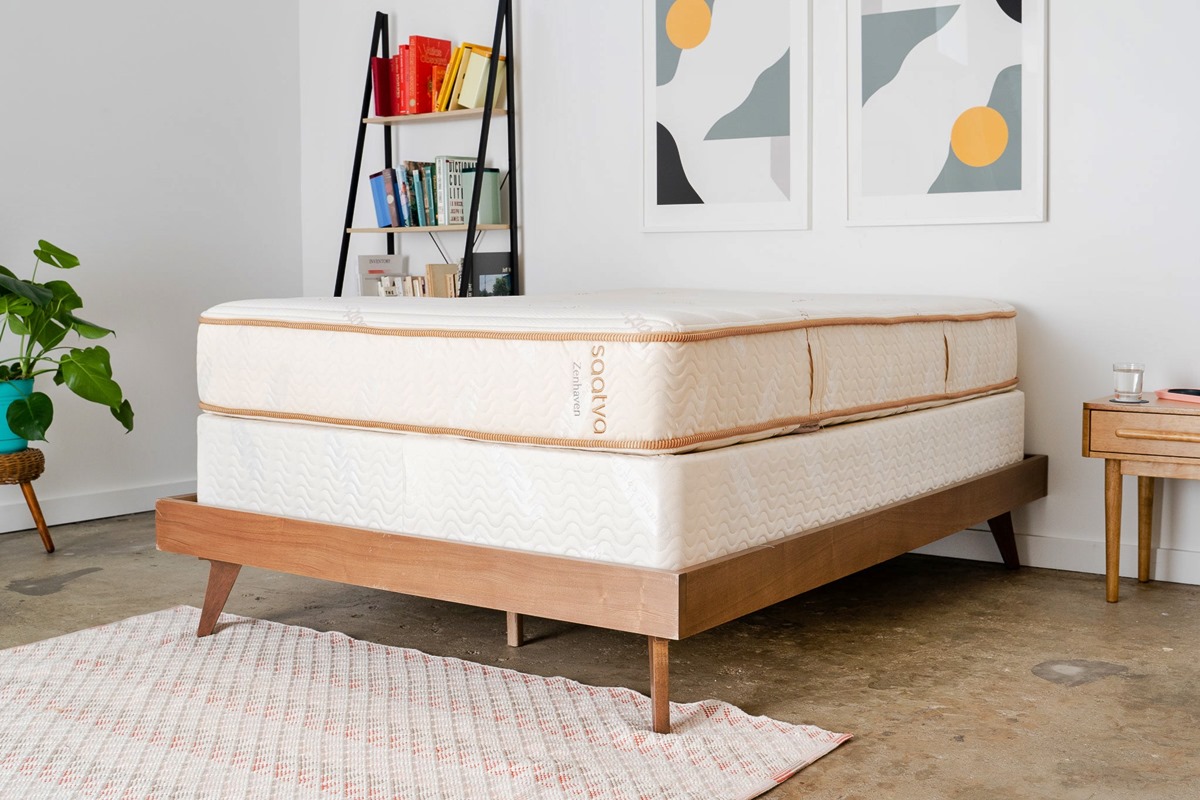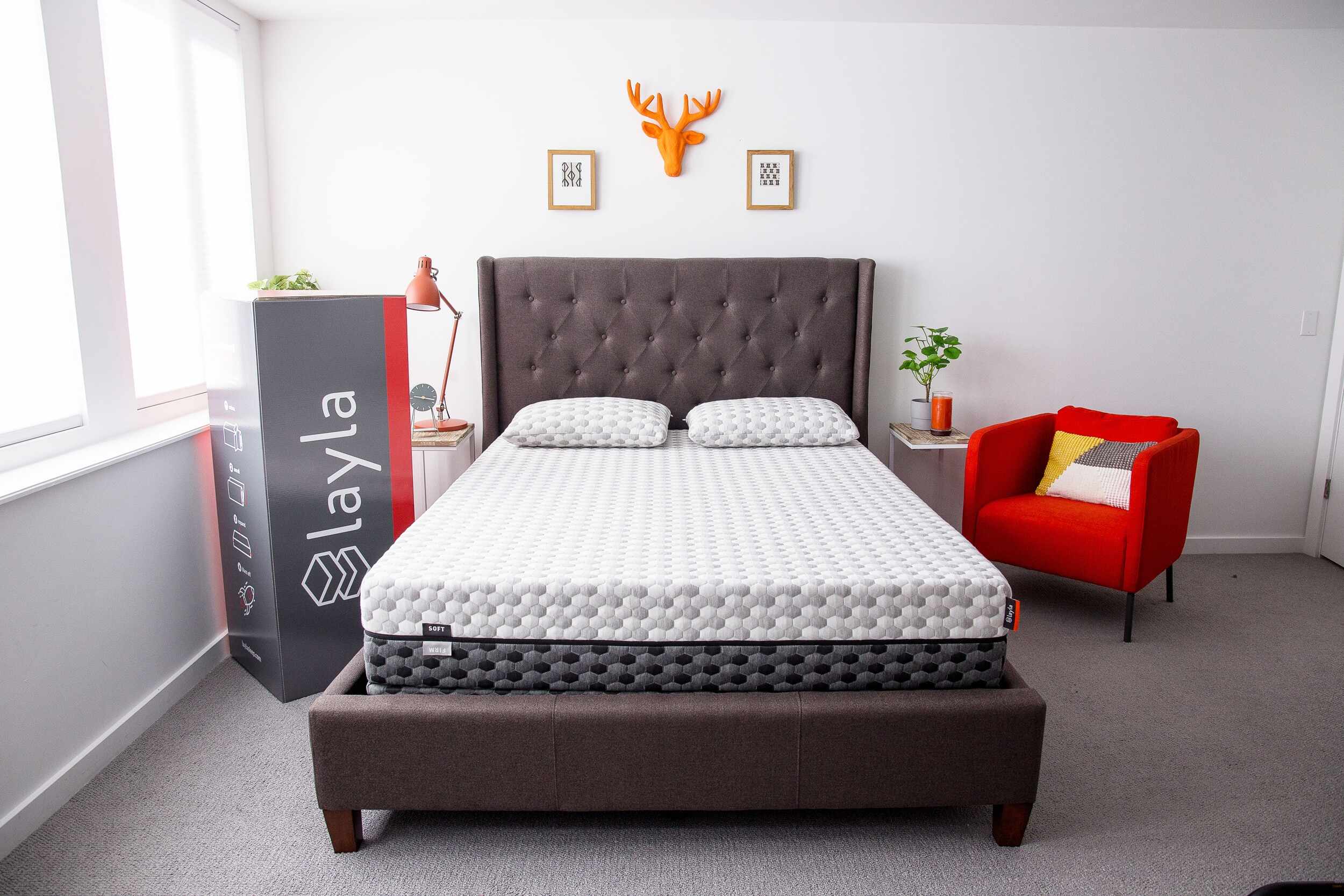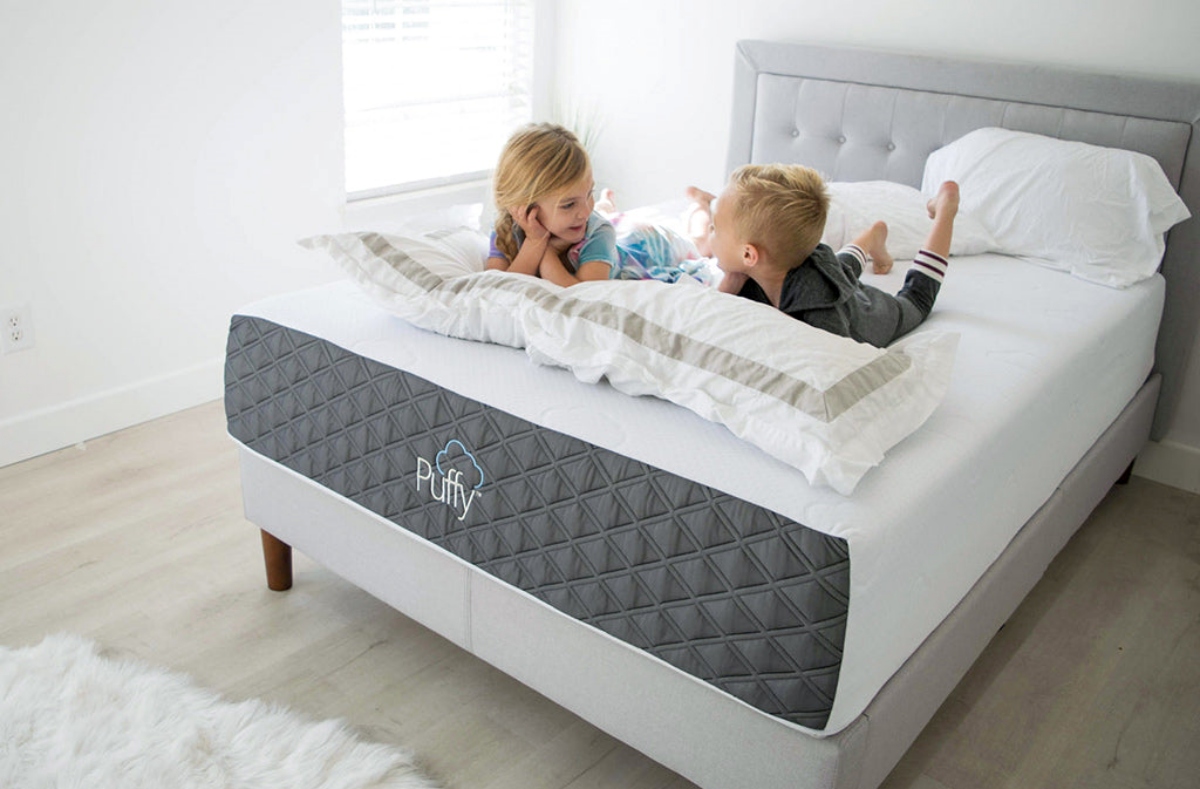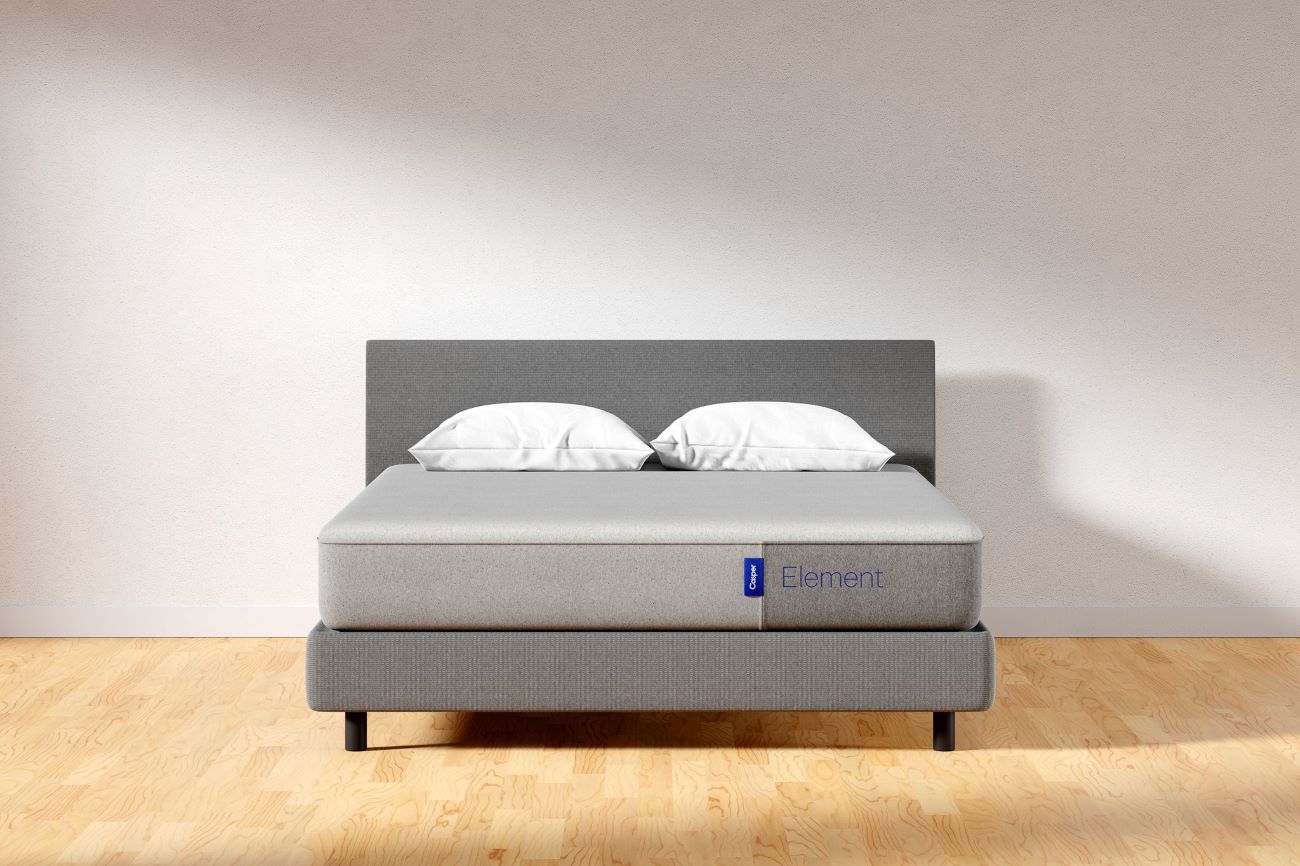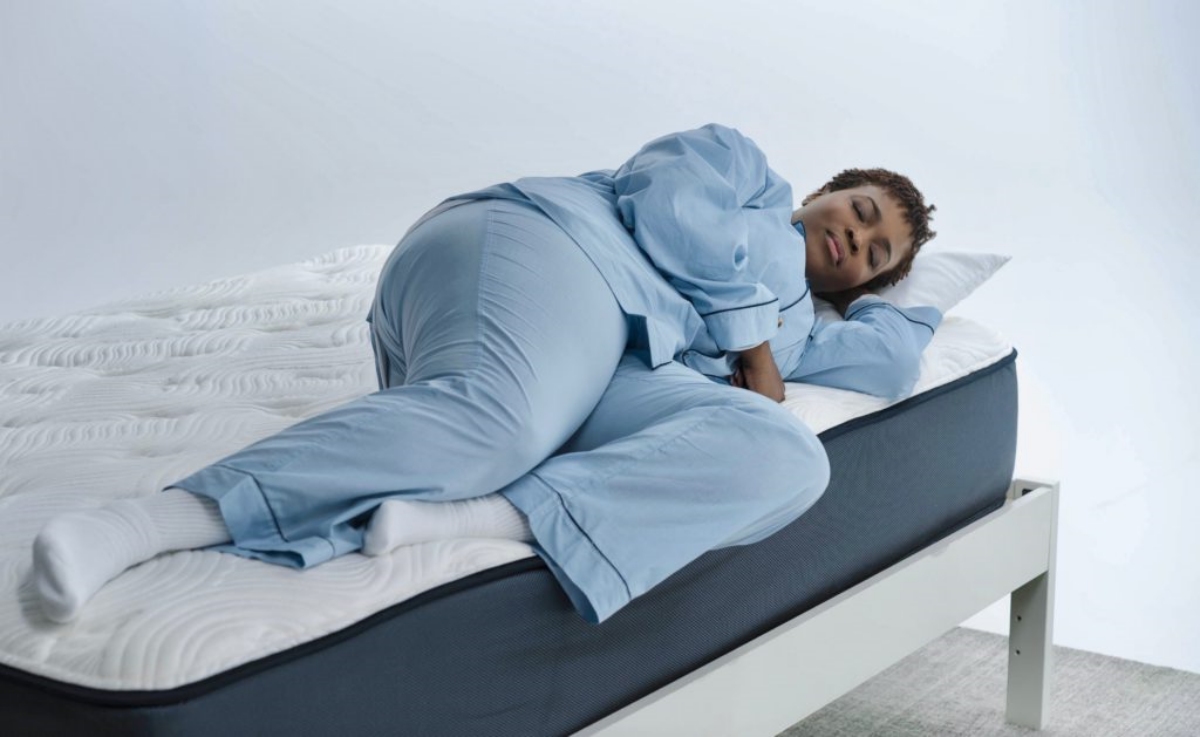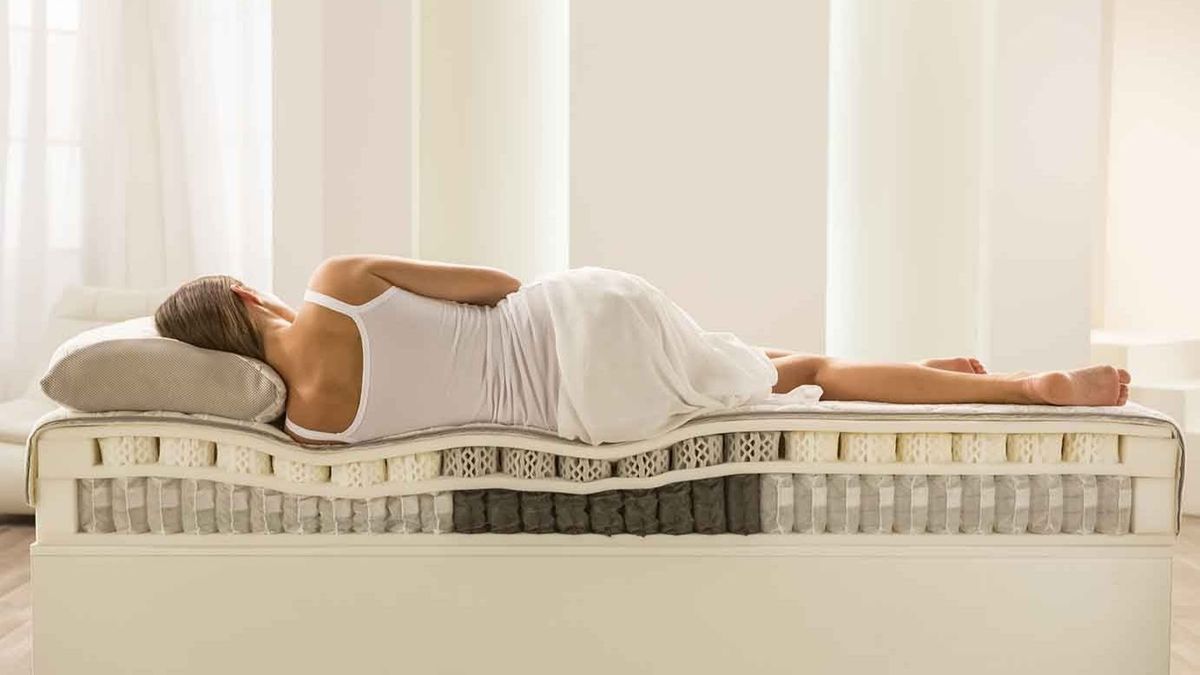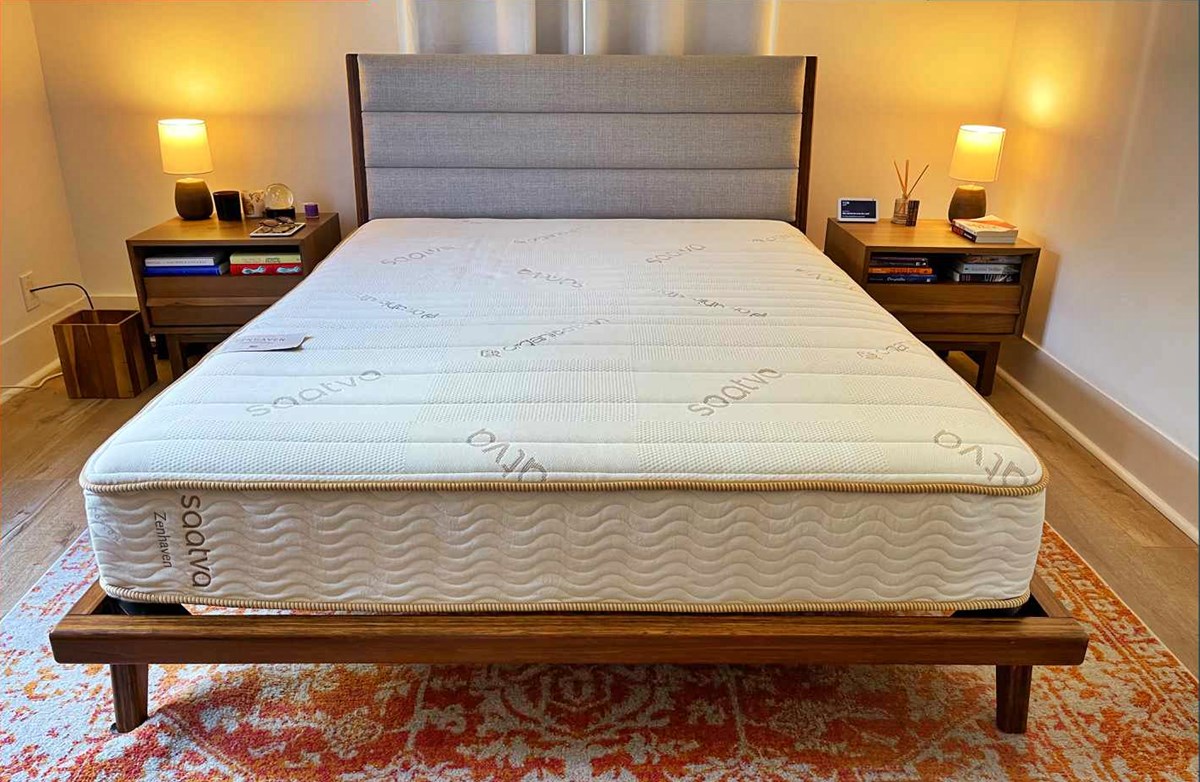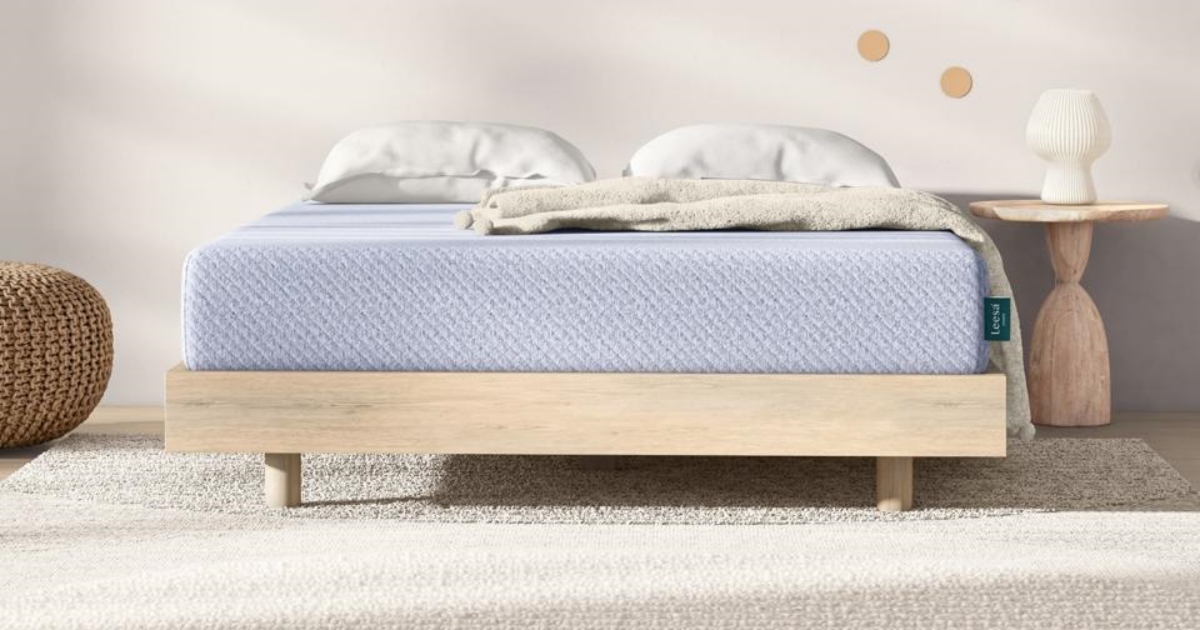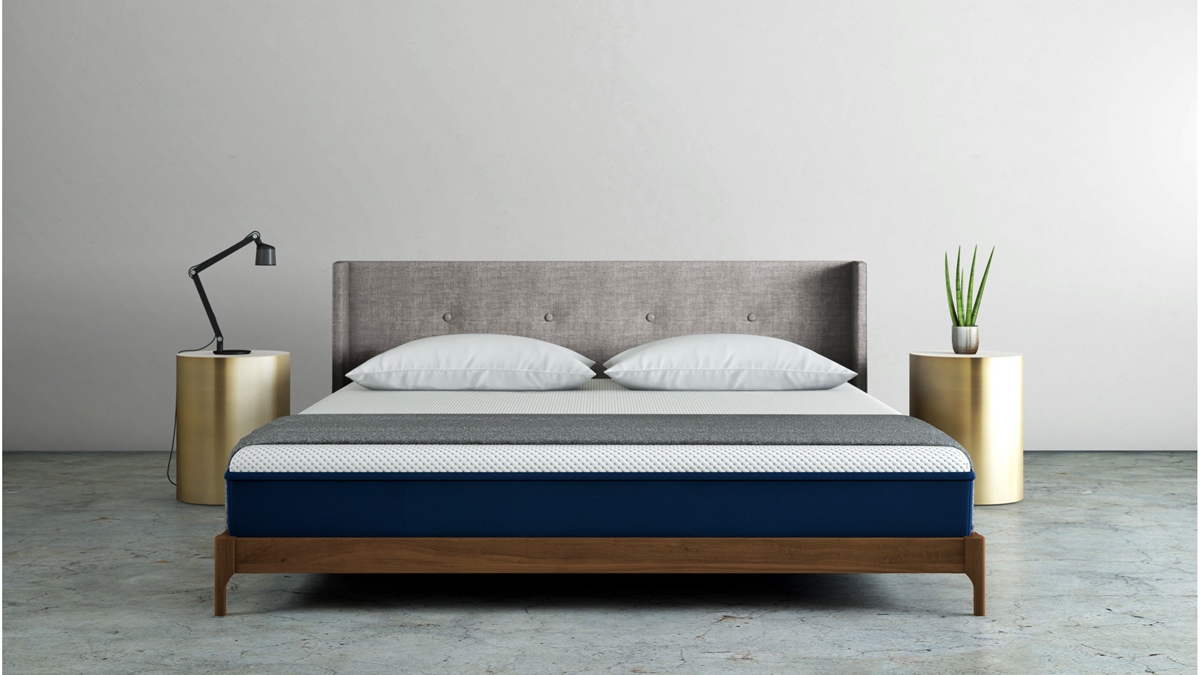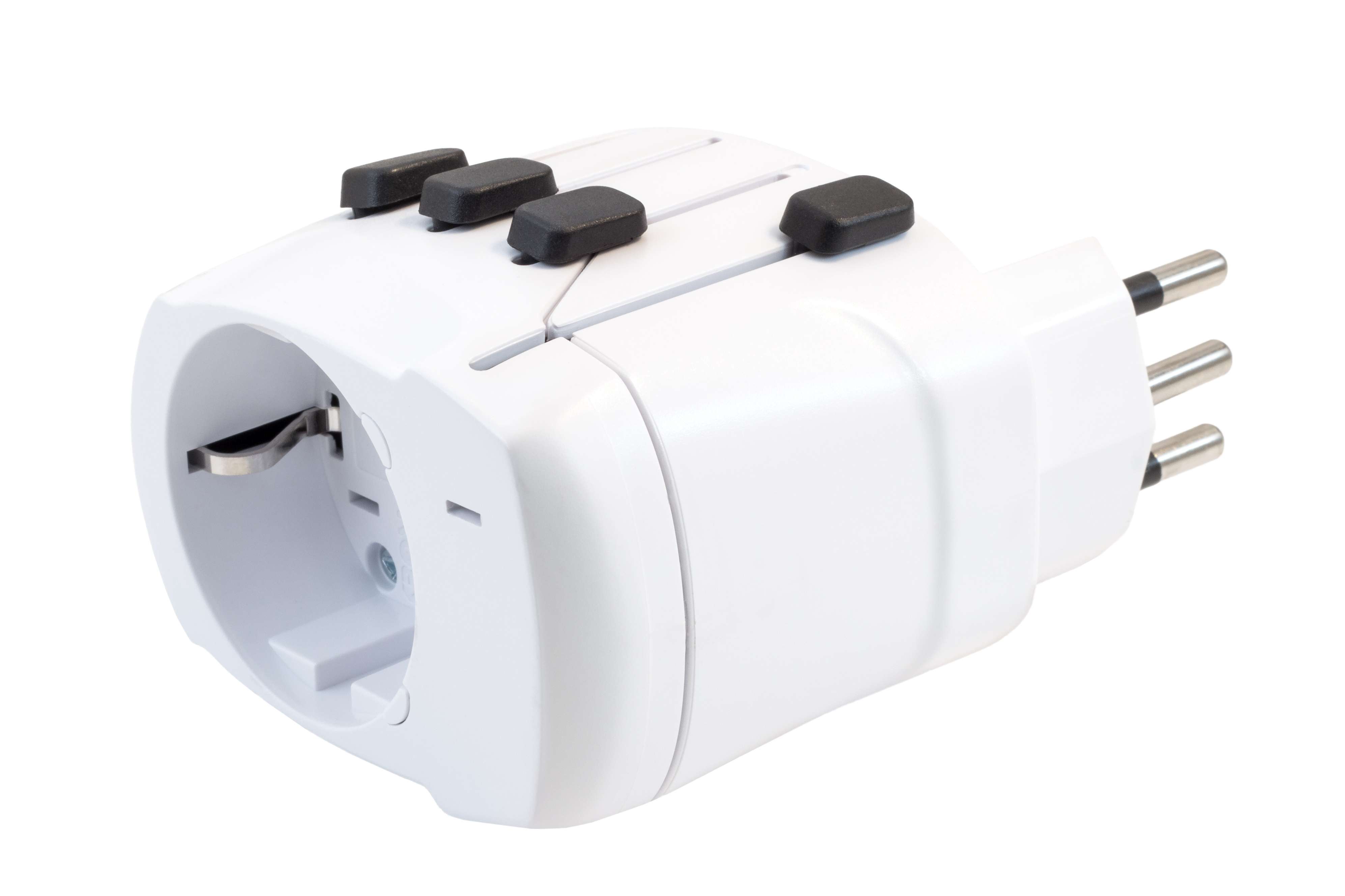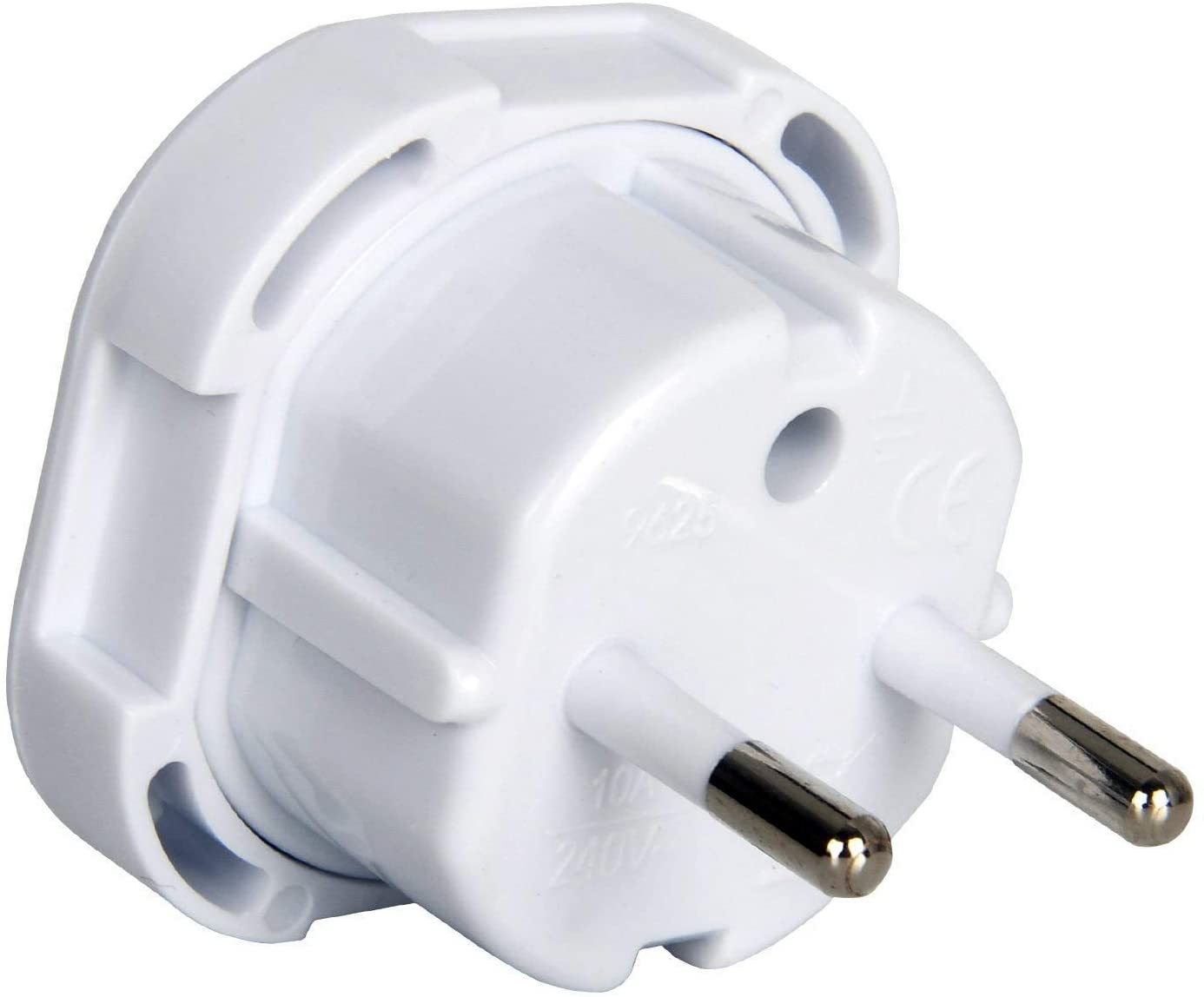Home>Furniture>Bedroom Furniture>What Type Of Mattress Does Not Need A Boxspring
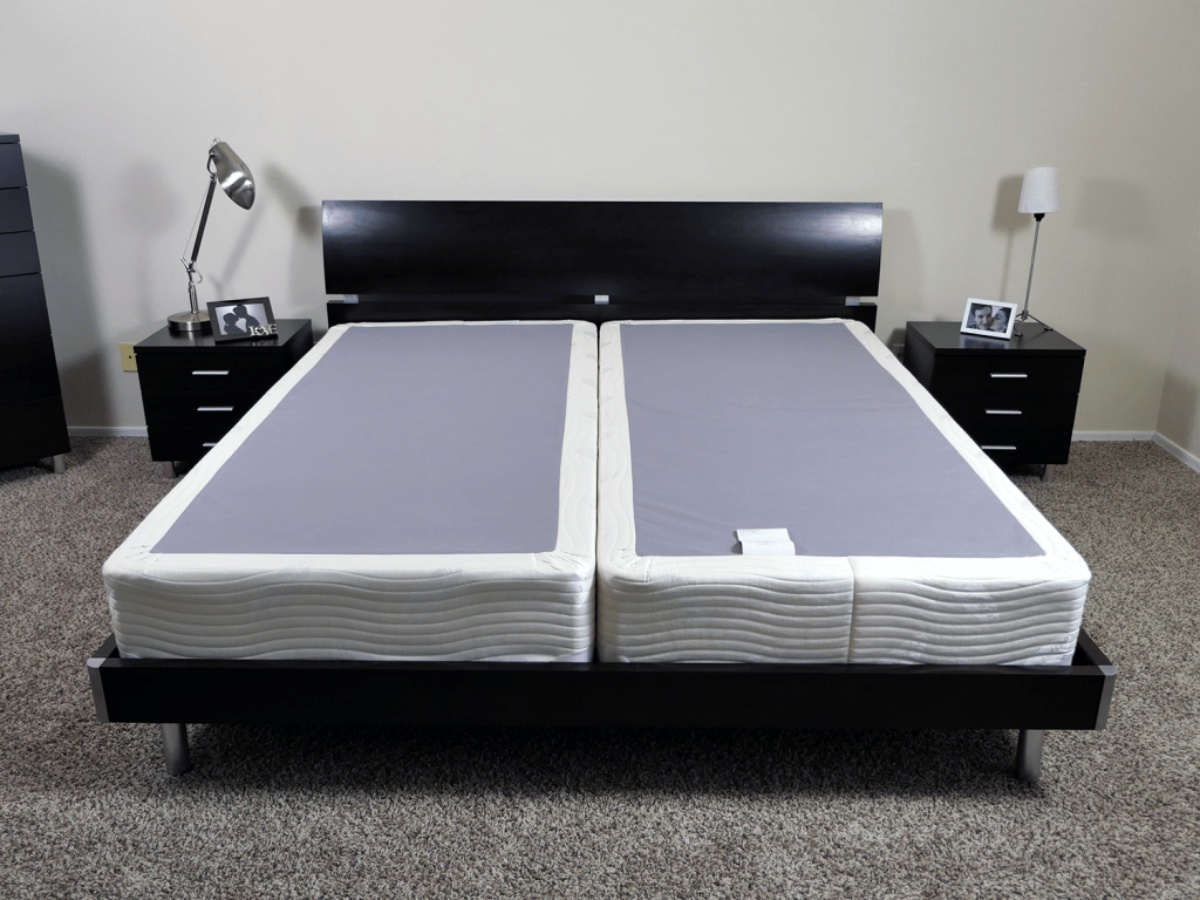

Bedroom Furniture
What Type Of Mattress Does Not Need A Boxspring
Modified: November 1, 2024
Discover the perfect bedroom furniture without the need for a boxspring. Find out what type of mattress will give you the utmost comfort and support for a restful night's sleep.
(Many of the links in this article redirect to a specific reviewed product. Your purchase of these products through affiliate links helps to generate commission for Storables.com, at no extra cost. Learn more)
Introduction
Welcome to the world of bedroom furniture! One of the most essential pieces in any bedroom is the mattress. It plays a crucial role in providing comfort, support, and a restful sleep. While many people are familiar with the concept of a boxspring, not everyone knows that there are certain types of mattresses that do not require one.
In this article, we will explore the different types of mattresses that do not need a boxspring. We will discuss their features, benefits, and why they can be a great alternative to traditional mattress setups. Whether you’re in the market for a new mattress or simply curious about the options available, join us on this journey as we dive into the fascinating realm of boxspring-free bedding.
Key Takeaways:
- Say goodbye to the boxspring! Memory foam, latex, hybrid, adjustable air, and futon mattresses offer comfort and support without the need for an extra foundation, saving space and enhancing sleep quality.
- Opting for a mattress that doesn’t require a boxspring brings cost savings, space optimization, convenience, and improved support. Explore the world of boxspring-free bedding for a customized and comfortable sleep environment.
Read more: What Type Of Mattress Does Marriott Use
The Purpose of a Boxspring
Before we delve into the types of mattresses that don’t require a boxspring, let’s first understand the purpose of a boxspring. Traditionally, a boxspring is a supportive foundation that sits beneath the mattress. Its main functions are to provide additional height, support the weight of the mattress and sleeper, and absorb shock.
Boxsprings are typically made with a wooden or metal frame, covered with upholstery or fabric, and topped with a set of springs or slats. These springs or slats are designed to help distribute weight evenly across the mattress, prevent sagging, and increase the overall lifespan of the mattress.
While boxsprings have been a standard part of mattress setups for many years, they may not be necessary for all types of mattresses. Modern mattress designs and advancements in sleep technology have introduced alternatives that can provide sufficient support and eliminate the need for a boxspring.
Now that we have a basic understanding of the purpose of a boxspring, let’s explore the different types of mattresses that can function effectively without one.
Types of Mattresses That Do Not Require a Boxspring
When it comes to choosing a mattress that doesn’t require a boxspring, you have several options to consider. Let’s take a closer look at some of the popular choices:
- Memory Foam Mattress: Memory foam mattresses are made from viscoelastic foam that conforms to the shape of your body, providing excellent pressure relief and support. These mattresses are known for their ability to distribute weight evenly, making them suitable for use on a solid, flat surface, such as a platform bed or adjustable base.
- Latex Mattress: Latex mattresses are crafted from natural or synthetic latex foam. They offer a responsive and breathable sleep surface that contours to your body’s curves while providing ample support. Latex mattresses can be placed on a platform bed or adjustable base without the need for a boxspring.
- Hybrid Mattress: A hybrid mattress combines the support of innerspring coils with the comfort and pressure relief of foam or latex layers. These mattresses often have a sturdy base layer that eliminates the need for a boxspring. They can be placed on a platform bed or adjustable base, offering a versatile and supportive sleep experience.
- Adjustable Air Mattress: Adjustable air mattresses use air chambers to provide customizable firmness levels. These mattresses typically come with a solid foundation or platform that negates the need for a boxspring. You can easily adjust the firmness level of the mattress to your preference without the added support of a boxspring.
- Futon Mattress: Futon mattresses are known for their versatility. These mattresses, typically made from cotton or a combination of cotton and foam, can be placed directly on a futon frame or platform bed without the need for a boxspring. They offer a comfortable sleep surface and can be easily folded and stored when not in use.
These are just a few examples of mattresses that can be used without a boxspring. However, it’s important to note that the specific requirements may vary depending on the manufacturer’s instructions. Always refer to the mattress manufacturer’s guidelines to ensure you’re using the mattress correctly and optimizing its performance.
Now that we have explored the different types of mattresses, let’s delve into the benefits of opting for a mattress without a boxspring.
Memory Foam Mattress
A memory foam mattress is a popular choice for those seeking exceptional comfort and support. Made from layers of viscoelastic foam, this type of mattress conforms to the contours of your body, offering pressure relief and spinal alignment. Thanks to its unique properties, a memory foam mattress can function effectively without the need for a boxspring.
One of the main advantages of a memory foam mattress is its ability to distribute weight evenly. The foam reacts to the heat of your body, gently cradling and supporting you in all the right places. This even weight distribution eliminates the need for additional support from a boxspring, making it suitable for use on a solid, flat surface.
Many memory foam mattresses are designed with a sturdy base layer that provides the necessary support and stability. This base layer acts as a foundation, ensuring the mattress remains in place and maintains its shape over time. As a result, a boxspring is unnecessary, saving you both space and cost.
Memory foam mattresses are versatile and can be used on various types of bed frames. Whether you have a platform bed, an adjustable base, or even a slatted bed frame, a memory foam mattress can adapt and provide exceptional comfort without the need for a boxspring.
Furthermore, using a memory foam mattress without a boxspring can actually offer some benefits. The absence of a boxspring eliminates the potential for sagging or uneven support, ensuring that your mattress remains in optimal condition for longer. Additionally, without a boxspring, you can enjoy a lower-profile bed setup, making it easier to get in and out of bed while still enjoying the benefits of a supportive and luxurious sleep surface.
Overall, a memory foam mattress is an excellent choice for those looking for a comfortable and supportive sleep experience without the need for a boxspring. Its ability to distribute weight evenly and provide ample support on a solid surface make it a versatile and convenient option for any bedroom.
As we continue our exploration, let’s move on to the next type of mattress that doesn’t require a boxspring: the latex mattress.
Latex Mattress
A latex mattress is a popular choice for those seeking a natural and supportive sleep surface. Made from either natural or synthetic latex foam, this type of mattress offers a unique combination of comfort, pressure relief, and durability. What’s more, a latex mattress can be used without the need for a boxspring.
One of the key advantages of a latex mattress is its ability to provide excellent support while conforming to your body’s shape. The latex foam responds to your movements, contouring to your body and providing targeted support where you need it most. This characteristic eliminates the need for a boxspring, as the mattress itself can offer sufficient support on a solid, flat surface.
A latex mattress typically features a dense, supportive base layer that acts as a foundation. This base layer provides stability, ensuring the mattress remains in place and maintains its shape. With this sturdy base layer, a boxspring is unnecessary, allowing you to use the latex mattress directly on a platform bed or adjustable base.
Additionally, latex mattresses are known for their breathability and temperature regulation. The natural or synthetic latex foam has an open-cell structure, allowing air to circulate freely within the mattress. This promotes airflow, keeping you cool and comfortable throughout the night. By eliminating the boxspring, you optimize the airflow and enhance the overall breathability of the sleep surface.
Choosing a latex mattress without a boxspring offers several benefits. Firstly, it reduces the overall height of your bed setup, making it easier to get in and out of bed. This can be particularly beneficial for those with mobility issues or individuals who prefer a lower-profile bed. Secondly, without a boxspring, there is less potential for sagging or uneven support over time, ensuring that your latex mattress remains in excellent condition for years to come.
Overall, a latex mattress is an excellent choice for those seeking a supportive, durable, and natural sleep surface. Its ability to provide targeted support, breathability, and temperature regulation make it a great option without the need for a boxspring. Let’s move on to the next type of mattress that can be used without this additional foundation: the hybrid mattress.
A platform bed or a slatted bed frame with solid support can be used with a memory foam, latex, or hybrid mattress without needing a box spring. These types of mattresses are designed to be used on a solid surface for proper support.
Read more: What Type Of Mattress Does The Hilton Use
Hybrid Mattress
A hybrid mattress combines the best features of different mattress types to offer a versatile and comfortable sleep experience. It typically combines the support of innerspring coils with the comfort and pressure relief of foam or latex layers. The construction of a hybrid mattress allows it to function effectively without the need for a boxspring.
One of the key advantages of a hybrid mattress is its sturdy base layer, which consists of innerspring coils. These coils provide excellent support, stability, and durability. The strong foundation of a hybrid mattress eliminates the need for an additional boxspring, as the mattress itself can comfortably rest on a solid surface.
The comfort and pressure relief layers of a hybrid mattress often consist of foam or latex. These layers offer cushioning and contouring to your body, ensuring a restful and supported sleep experience. The combination of supportive coils and comfort layers allows a hybrid mattress to deliver excellent support without the need for a boxspring.
Another benefit of using a hybrid mattress without a boxspring is the reduction in height. With the absence of a boxspring, the overall profile of your bed setup is lower, making it easier to get in and out of bed. This can be particularly useful for individuals with mobility issues or those who prefer a lower bed height.
Furthermore, opting for a hybrid mattress without a boxspring can simplify the setup and maintenance of your sleep environment. There is no need to worry about adjusting or replacing boxspring components over time, allowing for a hassle-free experience. Additionally, without a boxspring, you have more flexibility in terms of bed frame options, as a hybrid mattress can be used on a platform bed, adjustable base, or even a slatted bed frame.
In summary, a hybrid mattress offers the perfect blend of support and comfort, making it an excellent choice for those looking for a mattress that doesn’t require a boxspring. Its combination of innerspring coils and foam or latex layers provides ample support on a solid surface, eliminating the need for an additional foundation. With its lower profile and ease of use, a hybrid mattress is a convenient and versatile option to consider for a restful night’s sleep.
Now that we have explored hybrid mattresses, let’s move on to the next type of mattress that can be used without a boxspring: the adjustable air mattress.
Adjustable Air Mattress
An adjustable air mattress is a unique and customizable sleep solution that utilizes air chambers to provide personalized firmness levels. These mattresses are designed to adapt to your individual preference and can function effectively without the need for a boxspring.
The main advantage of an adjustable air mattress is its ability to adjust the firmness level. The air chambers within the mattress can be inflated or deflated to achieve your desired level of support and comfort. This customization eliminates the need for a boxspring, as the mattress can be placed directly on a solid surface, such as a platform bed or adjustable base.
Adjustable air mattresses often come with a solid foundation or platform as part of their design. This foundation provides the necessary support and stability for the mattress, eliminating the need for an additional boxspring. The solid base ensures that the mattress remains in place and offers optimal support, regardless of the firmness level chosen.
Using an adjustable air mattress without a boxspring offers several benefits. Firstly, it simplifies the setup and maintenance of your bed, as there is no need to worry about additional components or adjustments to the boxspring. Secondly, it provides a lower-profile bed setup, making it easier to get in and out of bed. This can be particularly advantageous for individuals with mobility issues or those who prefer a lower bed height.
Additionally, adjustable air mattresses are known for their excellent motion isolation properties. The individual air chambers absorb motion, minimizing disturbances caused by movement, ensuring a peaceful night’s sleep for you and your partner. With the absence of a boxspring, the motion isolation benefits of the adjustable air mattress are further enhanced.
Overall, an adjustable air mattress is an excellent choice for those seeking a customizable sleep experience without the need for a boxspring. Its ability to adjust firmness levels, its solid foundation, and its motion isolation properties make it a versatile and convenient option. Let’s move on to the next type of mattress that doesn’t require a boxspring: the futon mattress.
Futon Mattress
A futon mattress is a versatile and space-saving option that can be used without the need for a boxspring. Traditionally used in Japanese households, a futon mattress consists of a cotton or a combination of cotton and foam, offering a comfortable sleep surface that can be placed directly on a futon frame or platform bed.
One of the main advantages of a futon mattress is its flexibility and adaptability. It can easily be folded and stored, making it an ideal choice for small spaces or multi-purpose rooms. With a futon mattress, there is no need for a boxspring as it can be placed directly on a flat, supportive surface.
Futon frames are designed with slats or a solid base that provides the necessary support for the mattress. This eliminates the need for an additional foundation like a boxspring. The mattress fits securely onto the frame, ensuring a comfortable and stable sleep surface.
Using a futon mattress without a boxspring offers various benefits. Firstly, it simplifies the bed setup as there are no additional components or foundations to worry about. This not only saves space but also reduces costs. Secondly, without a boxspring, the overall height of the bed is minimized, making it easier to get in and out of bed.
Futon mattresses are known for their versatility. During the day, the mattress can be used as a seating area, and at night, it can be easily unfolded for sleeping. This dual functionality is ideal for small apartments or guest rooms where space is limited.
Furthermore, futon mattresses often have a firm and supportive feel, which can be beneficial for individuals who prefer a more solid sleep surface. The cotton or cotton-foam combination provides adequate support and comfort without the need for additional boxspring support.
In summary, a futon mattress is a practical and space-saving option that can be used without a boxspring. Its adaptability, versatility, and firm support make it an excellent choice for those looking for a minimalist sleep setup. Whether you have limited space or prefer a multi-purpose room, a futon mattress provides a comfortable and functional solution.
Now that we have explored the different types of mattresses that do not require a boxspring, let’s move on to discussing the benefits of not using a boxspring in your mattress setup.
Benefits of Not Using a Boxspring
When considering a mattress setup, there are several benefits to opting for a mattress that does not require a boxspring. Let’s explore some of the advantages below:
- Cost Savings: By choosing a mattress that doesn’t require a boxspring, you can save on the additional expense of purchasing a boxspring. This can be particularly beneficial for those on a budget or looking to allocate their funds towards other aspects of their bedroom setup.
- Space Optimization: Not using a boxspring allows for a lower-profile bed setup, which can be advantageous in rooms with limited vertical space. This is especially useful in smaller bedrooms or rooms with low ceilings, providing a visually streamlined and space-efficient look.
- Convenience and Ease of Use: Without a boxspring, the setup and maintenance of your mattress become simpler. There is no need to worry about adjusting or replacing boxspring components over time. This reduces the time and effort required to keep your bed in optimal condition.
- Improved Air Circulation: A mattress placed directly on a solid surface can allow for better air circulation. This promotes breathability and helps prevent the accumulation of heat, leading to a cooler and more comfortable sleep environment.
- Enhanced Support: Many mattresses designed to be used without a boxspring come with a sturdier base layer or foundation that provides ample support. This eliminates the need for additional support from a boxspring and ensures proper spinal alignment and pressure relief.
- Reduced Motion Transfer: Without a boxspring, there is less potential for movement to transfer across the mattress. This can be particularly beneficial for couples, as it minimizes disturbances caused by one partner’s movements during sleep, resulting in a more restful and uninterrupted sleep.
It’s important to note that not all mattresses are designed to be used without a boxspring, so always follow the manufacturer’s guidelines. Additionally, some individuals may still prefer the added height and feel of a mattress with a boxspring. Ultimately, the decision to use a boxspring or not depends on personal preference and the specific requirements of the mattress you choose.
Now that we have explored the benefits of not using a boxspring, let’s conclude our journey through the world of mattresses without this additional foundation.
Read more: What Type Of Mattress Does Best Western Use
Conclusion
When it comes to choosing a mattress, the traditional concept of pairing it with a boxspring is not always necessary. There are several types of mattresses available that can function effectively without the need for a boxspring, offering a more streamlined and convenient sleeping experience.
In this article, we explored five types of mattresses that do not require a boxspring: memory foam, latex, hybrid, adjustable air, and futon mattresses. Each of these options offers unique features and benefits, ranging from memory foam’s contouring support to adjustable air mattress’s customizable firmness levels.
Choosing a mattress that doesn’t require a boxspring provides various advantages, including cost savings, space optimization, convenience, enhanced support, improved air circulation, and reduced motion transfer.
It’s important to note that while these mattresses can function effectively without a boxspring, it’s crucial to follow the manufacturer’s guidelines and ensure the mattress is placed on a suitable supportive surface, such as a platform bed or adjustable base.
Ultimately, the decision of whether or not to use a boxspring depends on personal preference, specific mattress requirements, and desired sleep setup. By exploring the alternatives to traditional mattress setups, you have the opportunity to create a customized and comfortable sleep environment that suits your needs and preferences.
We hope this article has provided you with valuable insights into the world of mattresses without boxsprings. Whether you’re in the market for a new mattress or simply curious about the options available, we encourage you to explore the possibilities and find the perfect mattress that brings you the restful sleep you deserve.
Frequently Asked Questions about What Type Of Mattress Does Not Need A Boxspring
Was this page helpful?
At Storables.com, we guarantee accurate and reliable information. Our content, validated by Expert Board Contributors, is crafted following stringent Editorial Policies. We're committed to providing you with well-researched, expert-backed insights for all your informational needs.
